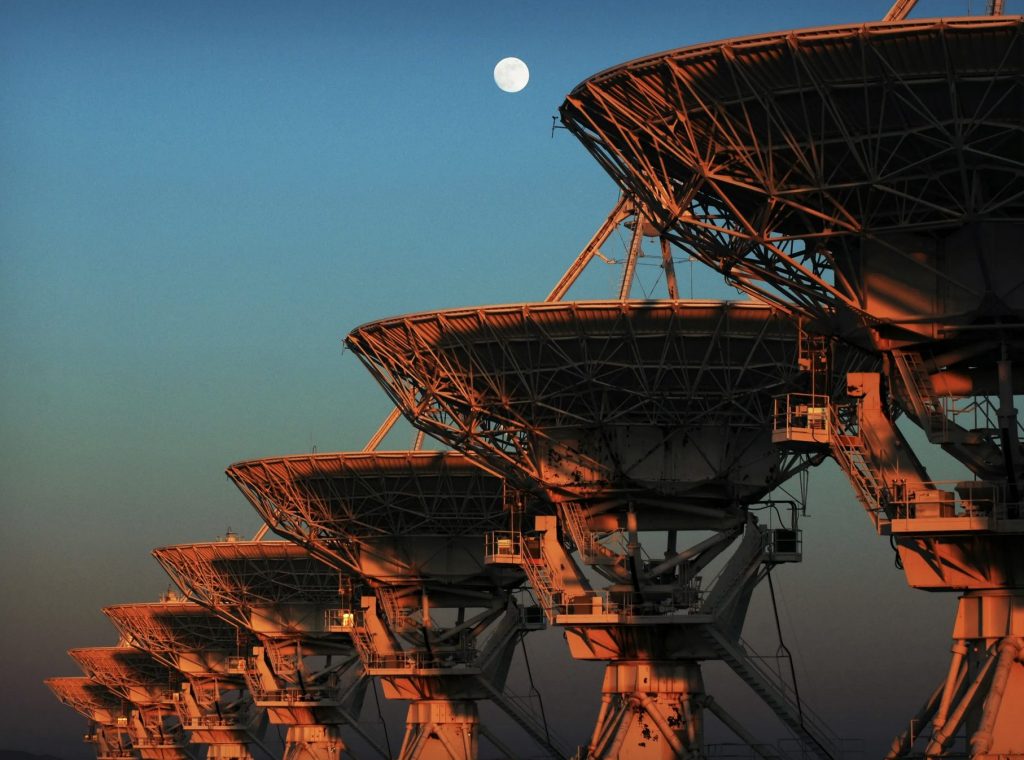SCITAS actively collaborates with several laboratories at EPFL, and offers several opportunities for advanced university students looking for challenging research projects in scientific computing. We welcome applications from different academic disciplines and backgrounds.
Registration opens on is-academia. Interested students should contact E. Tolley and register under their names on the platform.
Proposed TP4 Projects
Available for Spring 2024 and Fall 2024.
Projects in Radio Astronomy

Projects in scientific computing for radio astronomy, in collaboration with the Laboratory of Astrophysics.
Supervisors: Emma Tolley, Chris Broekema (ASTRON)
Modern large-scale distributed radio telescopes, like the LOFAR array in the Netherlands[1], and the Square Kilometre Array currently under construction in South Africa and Australia[2], generate terabits of data every second that, to the casual observer, look suspiciously like white noise. Only after intensive processing, involving large volumes of data and significant amounts of compute capacity, can a scientist construct recognisable images. The goal of this project is to investigate use of quantum computing for calibration and imaging of radio astronomy data.
Quantum computing offers advantages over classical computing in select problems where the defining properties of a quantum computer (superposition, interference and entanglement) play a major role in the solution. This project will explore (partial) radio astronomical calibration using quantum computers. We will explore efficient manners to express the data (input) and readout (output) from a quantum computer for calibration. The student will work in the context of a research group with opportunities for collaboration.
This project should help express radio telescope visibility and image data and calibration solutions in an efficient manner onto quantum qbits. In collaboration with the research team, this will help apply quantum techniques to solve calibration and imaging challenges using new and pre-existing techniques, such as quatum linear solvers.
[1] LOFAR: The LOw-Frequency ARray, M.P. van Haarlem et al, Astronomy and Astrophysics, Aug 2013
[2] https://www.skatelescope.org/
Supervisors: Florian Cabot (Visualization Scientist), Emma Tolley
The Gaia space telescope is the ESA mission designed to chart a three-dimensional map of our Milky Way galaxy. The latest data release from Gaia (DR3) is a catalog of over 1.8 billion celestial objects with positions, motions, brightness, and colors. The catalog includes stars, galaxies, quasars, asteroids, and more. The sheer size and complexity of this data make it challenging to analyze and interpret. However, the data provides a unique opportunity for scientific discovery, and visualization is a powerful tool for gaining insights into such vast datasets. Our software VIRUP [1] is a Virtual Reality tool to do astrophysical data visualization that can be used for such a task, as it is optimized for large datasets.
This project requires importing the Gaia DR3 data into VIRUP to create new interactive visualizations of it. This would involve first developing a data processing pipeline for the raw data to convert it into a VIRUP-compatible format. Next, GPU-based code would be written to enhance the basic visualization provided by VIRUP to better suit the characteristics of the Gaia data. This exploratory project will give the student an opportunity to immerse themselves in a rich astrophysical dataset and interact with researchers actively working on it, to provide a tool that would be useful for their research.